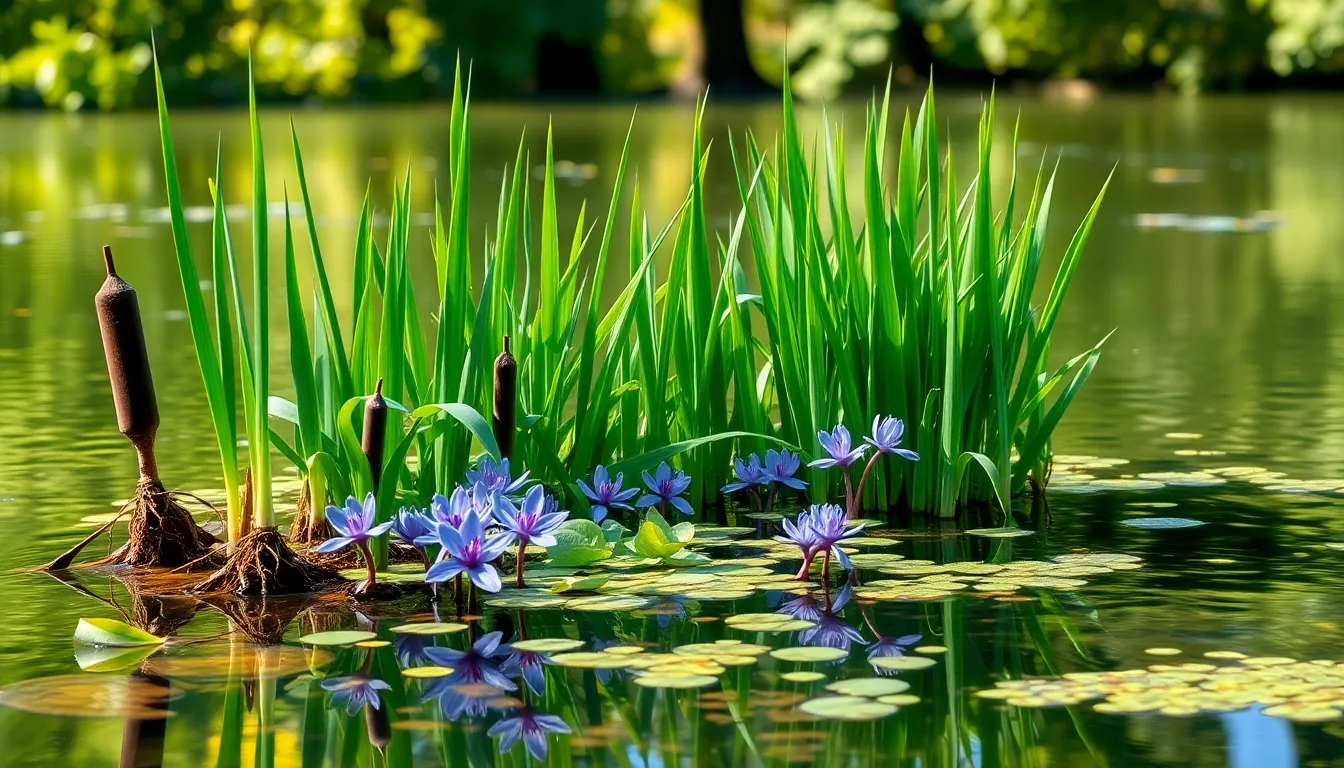Navigating the world of aquatic plants can feel a bit like stepping into a new dimension, a vibrant, lush underworld full of fascinating life forms. While many think of plants as the greenery above water, there’s a whole realm of flora that thrives beneath and upon our lakes, ponds, and rivers. In fact, exploring these aquatic botanicals is not just for gardeners and aquarium enthusiasts. As it turns out, they play critical roles in ecosystems and are simply stunning to behold (not to mention they can make any garden or water feature look like something out of a fairy tale). Let’s dive deep into the enchanting world of aquatic plants, shall we?
Aquatic Plants Examples

Understanding aquatic plants begins with categorization. They generally fall into three main types: emergent, floating, and submerged.
Emergent Plants
These incredible plants rise above the water, their roots anchored in the muddy bottom. Think cattails and bulrushes. They not only provide vital habitats for a plethora of wildlife but also help in stabilizing shorelines.
Floating Plants
Floating plants are well known for their leisurely drift across the water’s surface. Water hyacinths and duckweed are prime examples. They add a beautiful aesthetic to waterways and are crucial in providing cover for fish and other aquatic creatures.
Submerged Plants
As the name suggests, submerged plants live entirely underwater. Species like eelgrass and coontail provide essential habitats for aquatic life and help in oxygen production, keeping ecosystems healthy and balanced.
Common Examples of Aquatic Plants
When it comes to specific types of aquatic plants, there are some stars that really shine.
Water Lilies
Water lilies are iconic. With their broad, floating leaves and stunning blooms, they grace many ponds and lakes. They provide shade for fish, and their flowers attract pollinators, making them a popular choice for gardeners.
Lotus Flowers
Similar to water lilies but carrying a charm of their own, lotus flowers are remarkable for their capacity to thrive in muddy conditions. Their intriguing symmetry captures the eyes of many admirers, and they are often linked to serenity and beauty.
Duckweed
Duckweed might be small, but don’t underestimate it. This tiny floating plant can cover entire ponds in a lovely green blanket. Aside from being visually appealing, it absorbs excess nutrients from the water, helping prevent algae blooms.
Eel Grass
Among the submerged types, eelgrass is vital for both the health of aquatic ecosystems and as a food source for various marine life, including manatees. It forms dense meadows that provide shelter and breeding grounds for fish.
Uses and Benefits of Aquatic Plants
Aquatic plants are not just pretty faces: they serve numerous purposes in nature and human life.
Ecological Importance
These plants play a fundamental role in aquatic ecosystems. They help oxygenate water, provide shelter for fish and wildlife, and absorb harmful nutrients. In doing so, they contribute to the overall health of the aquatic environment.
Aesthetic Appeal in Aquariums and Ponds
Aquatic plants transform bland water features into beautiful scenes. Whether it’s a stunning aquascape in a tank or lush greenery in a backyard pond, they elevate the visual experience and create a lively atmosphere.
Role in Water Quality Improvement
By absorbing excess nutrients and pollutants, aquatic plants act as natural water filters. They improve water quality and aid in the natural purification process, making them essential in both natural and artificial water bodies.
Cultivation and Care of Aquatic Plants
Growing aquatic plants might seem daunting, but with the right know-how, anyone can cultivate a thriving underwater garden.
Planting Techniques
Begin by selecting the right plants for your environment. It’s crucial to consider sunlight, water depth, and climate. Many plants can be placed directly into the substrate at the bottom, while floating plants need just a little surface area to live.
Maintenance Tips
Maintenance primarily involves monitoring water quality and ensuring that plants receive adequate light. Periodically removing any dead foliage is also vital to keep the water clean and the plants healthy. Regularly check for signs of pests and diseases, which is particularly important in a confined aquascape.
Potential Challenges
Growing aquatic plants can present challenges. Algae blooms might compete for nutrients, while overpopulation of certain species can lead to imbalances. But, with proper care and monitoring, these challenges can often be managed.

